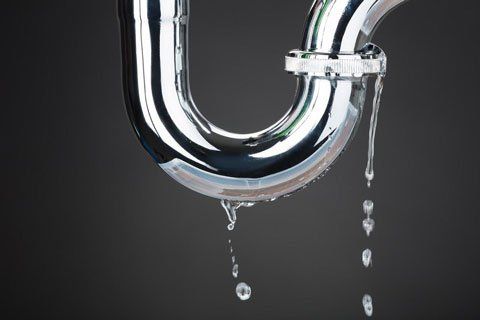The article which follows about Finding hidden leaks is incredibly insightful. Read it yourself and figure out what you think of it.

Early discovery of leaking water lines can mitigate a potential calamity. Apart from saving you cash, it will certainly lessen the aggravation as well as disappointment. The minute you find a leak, calling your plumber for fixings is the very best remedy. Some tiny water leaks may not be noticeable. If you can not find it with your nude eyes, here are some hacks that help.
1. Analyze the Water Meter
Every house has a water meter. Inspecting it is a guaranteed way that helps you uncover leakages. For starters, switch off all the water sources. Guarantee no one will certainly flush, utilize the faucet, shower, run the washing maker or dish washer. From there, go to the meter and also watch if it will certainly transform. Since nobody is utilizing it, there ought to be no activities. That shows a fast-moving leak if it moves. Similarly, if you spot no changes, wait a hr or more and inspect back again. This implies you may have a slow-moving leak that might also be below ground.
2. Inspect Water Intake
Evaluate your water costs and track your water consumption. As the one paying it, you should observe if there are any disparities. If you identify sudden changes, in spite of your consumption coinciding, it implies that you have leaks in your plumbing system. Keep in mind, your water bill need to drop under the same variety each month. A sudden spike in your costs indicates a fast-moving leakage.
On the other hand, a consistent boost on a monthly basis, despite having the exact same routines, shows you have a slow leak that's additionally slowly rising. Call a plumber to completely inspect your building, especially if you feel a cozy area on your floor with piping below.
3. Do a Food Coloring Examination
When it comes to water consumption, 30% comes from toilets. If the color somehow infiltrates your dish throughout that time without flushing, there's a leak between the container as well as dish.
4. Asses Outside Lines
Do not forget to inspect your outdoor water lines also. Examination spigots by affixing a garden pipe. Needs to water permeate out of the link, you have a loosened rubber gasket. Change this and also guarantee all connections are limited. It will certainly aid get it expertly analyzed and also maintained yearly if you've got a sprinkler system. One little leakage can squander tons of water as well as spike your water bill.
5. Evaluate as well as Evaluate the Scenario
Home owners must make it a behavior to check under the sink counters as well as also inside cabinets for any bad odor or mold and mildew development. These two red flags suggest a leakage so punctual interest is required. Doing routine assessments, even bi-annually, can save you from a major trouble.
Inspect for stainings as well as damaging as most home appliances and pipes have a life span. If you think leaking water lines in your plumbing system, do not wait for it to rise.
Early discovery of dripping water lines can reduce a possible catastrophe. Some small water leakages might not be noticeable. Checking it is a guaranteed method that assists you find leakages. One small leak can lose loads of water as well as surge your water costs.
If you think leaking water lines in your plumbing system, don't wait for it to escalate.
How to Know If Your Home Has a Hidden Leak
Water Meter Reveals Inexplicable Water Usage
If you’d like to test whether or not there’s a leak somewhere in your home, you can do this using your water meter. Here is how to conduct the test:
Don’t use any water in your home for at least 30 minutes; this also means not turning on faucets or water-using appliances.
Go outside, and check your water meter for activity.
If your water meter shows that there was activity, even though no one was using any water, this proves that there is a leak in your home.Visible Mold or Mildew Growth
Leaks behind walls create moist, dark environments that allow mold and mildew to grow and thrive. Eventually, you might see mold growth forming on the wall closest to a hidden leak.
If mold is growing in an area that receives a high amount of moisture, such as a bathroom, it may simply be an indication that better ventilation is needed. However, if you see mold growth on a wall or the ceiling in an area where you would not expect, you probably have a hidden leak.
Musty, Mildew Odor
Sometimes you might not be able to see the mold or mildew that is growing as a result of a leak. However, the smell can give the problem away just as easily. If you catch a whiff of something musty, there’s a good chance that old water is collecting somewhere in your home that you can’t see.
Stained/Warped Walls, Ceilings, or Floors
When your home soaks up water, a variety of red flags can become visible, including ceiling stains, bubbling drywall, warped walls, and sagging floors. While these issues can be caused by excess humidity, they can also be signs that a pipe or plumbing connection has started leaking behind your walls.
Inexplicably High Water Bill
After a while, you get a general sense for what your water bill should be. If you own a pool or sprinkler system, your bill will tend to be higher during summer. However, if you receive a water bill that seems especially high, and you can’t figure out what caused it, then you may have a hidden leak somewhere that’s increasing your bill.
https://www.plumbingjoint.com/blog/2019/july/how-to-know-if-your-home-has-a-hidden-leak/

I am very interested by Locating water leaks and I hope you appreciated the new article. Liked our blog? Please share it. Help someone else discover it. Thank-you for going through it.